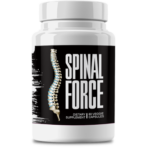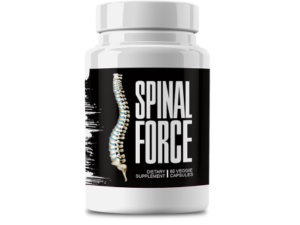This Village-Made Chinese Pain Reliever Eliminates Back And Joint Pain!
Expert Insights on Arthritis in My Knee: What You Need to Know

Getting to Know Arthritis in My Knee
You know, arthritis in my knee is something that a lot of us deal with, even if we don't always talk about it. It's one of those conditions that, despite being super common, still seems to puzzle many people around the globe. In this post, I'm diving into what arthritis in my knee really means—mixing a bit of personal experience with solid, research-backed insights. Whether you're just spotting some signs or have been managing this for a while, understanding the ins and outs can really help you feel more in control of your health.
Now, at first, the symptoms of arthritis in my knee, like that annoying pain, stiffness, or swelling, might sneak up on you. Sometimes they’re so subtle you might think, “What’s going on?” Experts say noticing these little hints sooner is a smart move—it can save you from a lot of extra trouble down the road. I’m here to break down what all that medical jargon means in plain language, making it easier for you to monitor what’s happening with your knee.
The idea behind gathering all this expert advice is simple. I want to help you feel confident when it comes to managing your condition. With real-life stories, the latest research, and practical tips straight from healthcare pros, consider this your go-to guide from diagnosis through treatment and everyday tweaks. So kick back, get cozy, and let’s chat about everything you need to know about dealing with arthritis in my knee.
The Basics: What’s Going On With Arthritis in My Knee?
Let’s start with the basics. Arthritis in my knee essentially means inflamed joints that cause discomfort and can really put a damper on your mobility. Whether it's due to wear and tear, previous injuries, or your immune system acting up, there are a few things to consider. I’m here to help demystify those underlying causes in a way that’s easy to digest.
As we chat about why this might be happening, think of factors like aging, carrying extra pounds, and repetitive strain from everyday activities. Sometimes, even genetics lends a hand in making some of us more prone to these issues than others. And, believe it or not, sometimes it’s our active lifestyles combined with a lack of proper joint protection that makes things worse. Knowing these risk factors might just give you the power to tweak your lifestyle choices and potentially slow things down.
Recognizing early signs is key. You might start noticing pain, stiffness, or even a little swelling in your knee—small things that, if ignored, can lead to bigger issues later on. Keep an eye out, and don’t hesitate to act if something seems off. Coming up next, we’ll dive into expert advice on how to diagnose these symptoms correctly and what treatment options might work best for you.
How the Experts Diagnose Arthritis in My Knee
Diagnosing arthritis in my knee isn’t as mysterious as it might seem. Healthcare pros combine your medical history with modern diagnostic tools—think X-rays, MRIs, and good old-fashioned physical exams—to really nail down what's happening. If your knee pain lingers, it's a good idea to get checked out sooner rather than later. After all, early diagnosis often leads to simpler, less invasive treatments.
When you’ve got persistent pain or swelling that just won’t quit—especially if it’s stopping you from doing everyday things like climbing stairs or just walking around—it’s time to chat with your doctor. Sometimes, it’s not even arthritis but something else, like tendonitis or a ligament injury, so a thorough evaluation is crucial to get a clear picture.
Remember, not every twinge in your knee is due to arthritis. Getting the right tests and talking through your daily habits can help pinpoint whether it’s inflammatory arthritis, osteoarthritis, or another issue altogether. This precise approach gives you clarity and sets the stage for a treatment plan that's tailored just for you.
Exploring Treatment Options for Arthritis in My Knee
When it comes to treatment, managing arthritis in my knee is as unique as you are. There’s no one-size-fits-all solution. Sure, there are pain relievers, anti-inflammatory meds, and in some severe cases, even surgery. But most experts recommend kicking off with the conservative stuff first—physical therapy and a few lifestyle shifts—before jumping into anything too drastic.
And let’s not forget about the growing popularity of alternative therapies. Many folks swear by acupuncture, herbal remedies, or even mindfulness practices to help with both the pain and the overall stress that comes with managing arthritis. It's all about finding that balanced mix that works for you, blending traditional treatments with a bit of holistic care.
The ideal treatment plan is often a bit of a cocktail—medication, physical therapy, some smart lifestyle choices, and maybe surgery if it comes to that. This multi-pronged approach really aims to ease inflammation, minimize pain, and keep your knee working as well as possible, letting you get back to doing what you love.
Lifestyle Tweaks to Help Manage Arthritis in My Knee
Living with arthritis in my knee isn’t just about what happens at the doctor’s—it’s also about the little changes you make every day. Regular, low-impact exercise like swimming or cycling can be a real game changer, keeping your joints loose and reducing that stubborn stiffness. Tailored physical therapy exercises can also build up the muscles that support your knee, protecting it in the long run.
Don’t underestimate the power of a solid diet either. Eating a balanced meal that’s low in inflammatory foods and high in omega-3s and antioxidants can really help ease overall inflammation. Maintaining a healthy weight is a big deal, too, since every extra pound adds pressure on your joints. It might be worth chatting with a nutritionist to see what dietary tweaks can make the biggest difference for you.
And then there are the daily habits. Ever thought about switching to supportive footwear, taking breaks when you sit too long, or just sneaking in some stretching throughout your day? Those small changes can add up to a big improvement, helping you manage pain and keep things moving in a healthier direction.
Looking Ahead: Innovations and Future Perspectives
Here’s something to get excited about: the future of arthritis care is evolving fast. New research is constantly unlocking innovative treatments—from novel medications to regenerative therapies that aim to repair damaged joint tissue. Imagine a future where we’re not just managing symptoms, but actively turning back the clock on joint degeneration!
Advances in diagnostic imaging and surgical techniques are enhancing how quickly and accurately doctors can detect early changes in the joint. This means more precise interventions and, quite possibly, shorter recovery times for patients. It’s pretty inspiring to see how technology is transforming the way we approach knee health.
There’s a noticeable buzz in the expert community, with talk of personalized medicine becoming the future norm for conditions like arthritis. Customized treatment plans, behavioral therapies, and even genetic interventions might soon be part of mainstream care. While challenges remain, the merging of cutting-edge research and clinical know-how is creating a hopeful outlook for improved mobility and overall quality of life.
Real-Life Stories and Common Questions
Sometimes, hearing real-life experiences is just what you need. I’ve listened to countless people share their journeys with arthritis in their knees—stories of struggle, persistence, and small victories. These firsthand accounts remind us that while the condition is challenging, there’s always a silver lining. They’re a great source of hope and practical advice that resonate on a very personal level.
Many of you might wonder things like, “How early should I see a doctor if I notice symptoms?” or “Will physical therapy really ease my pain?” The prevailing wisdom among healthcare professionals is that sooner is better. Early evaluations, coupled with a mix of therapy, medication, and lifestyle adjustments, tend to yield the best outcomes. Addressing these questions head-on helps clear up common myths and guides you toward informed decisions.
Plus, there are plenty of handy daily tips out there—like integrating low-impact exercises, using heat or cold packs for relief, or keeping a diary of your symptoms. These simple methods act as trusty sidekicks, helping you manage the condition day by day with a bit more ease and confidence.
Wrapping Up and Helpful Resources
To sum it all up, managing arthritis in my knee is truly a multifaceted journey that involves catching early signs, getting a proper diagnosis, exploring various treatment avenues, and making daily lifestyle adjustments. My hope is that the insights shared here empower you to tackle your condition head-on and make informed decisions for a more active, comfortable life.
If you ever need more support or guidance, plenty of resources are out there—from local clinics and trusted websites to support groups and expert publications. And of course, never hesitate to chat with your primary care provider or a specialist if anything feels off. With the right blend of information, professional advice, and everyday tweaks, managing arthritis in your knee can become a much more manageable part of your life.
I’d love for you to share your own experiences or ask questions in the comments. Tackling arthritis is a community effort, and your story might just help someone else out there. Thanks for taking the time to read through this—here’s to staying informed, proactive, and most importantly, keeping that knee moving!








